Let’s all agree that no one finds commensal rodents useful, not even the white-footed deer mouse many keep as pets. Commensal rodents inherently live off humans and can be destructive to homes and property without giving anything in return. In Indiana, the state’s tropical climate makes it conducive for most rodents, particularly house mice and Norway rats.
These two are the dominant rodent species that invade most homes in Indiana, terrorizing homeowners and farmers. As a resident of Indiana, you’ve unknowingly shared your living spaces with these unwelcome guests at some point. However, differentiating between a mouse and a rat is more like playing a game of “guess who” sometimes. Most people find it hard to differentiate between a mouse and a rat. In this piece, we will help you understand these rodents better, especially those likely to invade your Indiana home.
8 Rodents That Are Likely to Invade Your Home in Indiana
In Indiana, rodents live everywhere and in any environment, thanks to the state’s favorable climate. Some rodent species, like pocket mice, thrive in dry, hot deserts. Others, like voles, adapt better in cooler boreal forests.
Rats generally live in underground burrows and wall voids. They feed primarily on trash, pet food, meat scraps, cereal grains, and vegetables. Regarding appearance, rats have a tail shorter than their heads and bodies. Their ears are closer to their bodies and they tend to have smaller eyes with blunt noses and muzzles. On the other hand, mice have tails as long as their bodies with big ears and pointed noses. Since rats eat mice, you may have just one invader in your home at a time, but not necessarily both at once.
Whether you live in an urban, suburban, or rural setting, the chances are that there’s a rodent nearby. It could be your home, garage, backyard, farm, or vegetable garden. Below are eight of the most common rodents that would be determined to share your living spaces against your will.
Mice
The good old mouse is among the most common rodent species you’ll find in your home. Below are a few common species of mice to look out for.
House Mouse (Mus musculus)
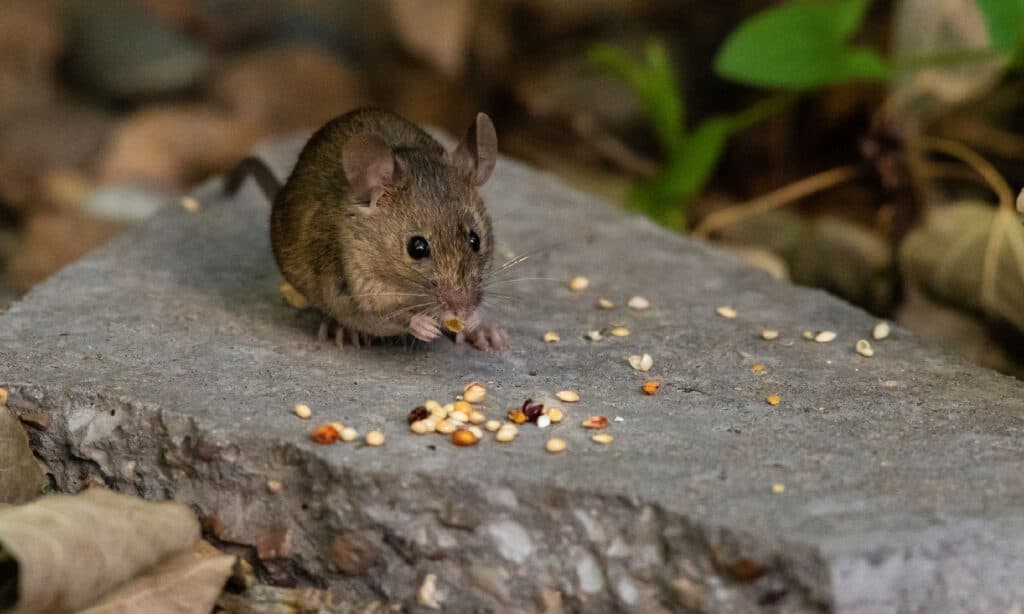
The house mouse is one of the most common you’ll see invading homes in the United States.
©iStock.com/Víctor Suárez Naranjo
More than 70 mice species are found in North America, but the house mouse, whose scientific name is Mus musculus, is the most common. You may think they are such adorable creatures with their small feet and pink noses, but you wouldn’t appreciate one and its entire family migrating into your home.
These rodents are notorious home invaders that adapt naturally to human presence. They feed on readily available food scraps and will not hesitate to build their nests in your home’s walls or dark attics. They might even settle in your basement if they find an unlimited food supply in your home.
Once settled, they’ll spend most of their time hiding in the shadows waiting for the opportune time to invade your kitchen and garbage bins. They also reproduce a lot, and controlling them can be a challenge. You may not know it, but you’re probably sharing your space with a mouse now.
Eastern Deer Mouse (Peromyscus maniculatus)

While similar to house mice, the eastern deer mouse is of a different subspecies.
©jitkagold/Shutterstock.com
The deer mouse is slightly related to the house mouse. It’s a member of different subspecies spread across every part of the United States. One way to know if a deer mouse has invaded your home is to take note of its color and appearance.
The deer mouse is a small, usually black or gray rodent with round ears, large black eyes, and white feet. It adapts better in rural environments and will likely settle in your backyard or around your vegetable garden.
The deer mouse isn’t just a ground creature. It has sharp claws that give it powerful climbing abilities, so don’t be surprised if you spot it nestling high up in hollow trees around your compound or on your rooftop.
Eastern deer mice feed mainly on food scraps and crumbs. You’re likely to find their nests in small spaces within your home. Don’t dismiss them just yet, though. These rodents reproduce throughout the year, increasing their population and making them incredibly hard to control.
If there’s an eastern deer mouse infestation in your home, you’ll need to involve a pest control company to help eliminate them. They can be such a nuisance that they wreak havoc on farms, vacation homes, and sheds.
They also pose a health risk to humans since they are known carriers of the highly contagious hantavirus. You and your household can contract this potentially fatal disease through contact with a dead mouse or inhaling aerosolized urine droplets of infected deer mice.
White-Footed Deer Mouse (Peromyscus leucopus)
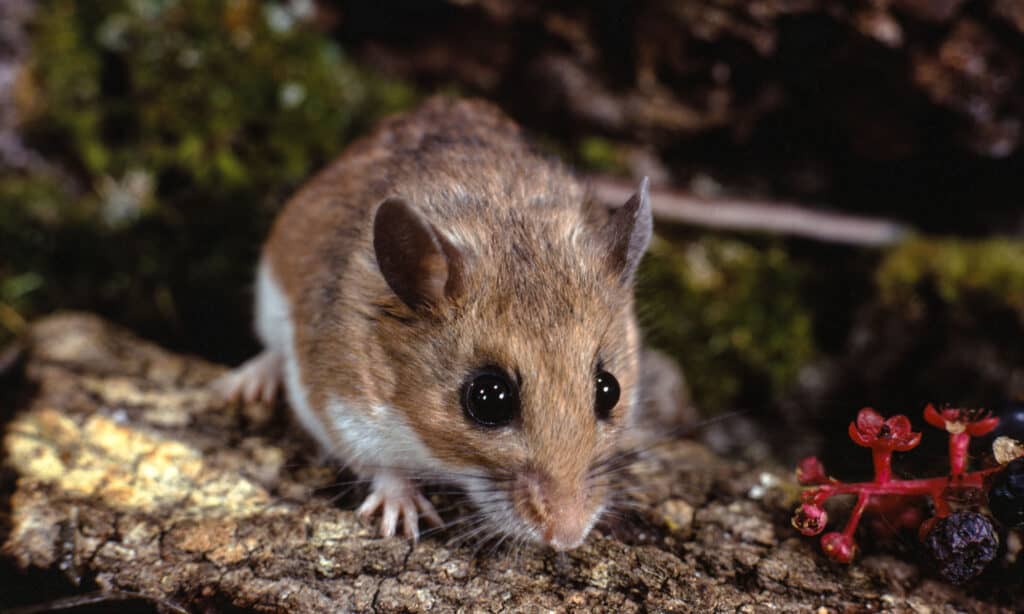
While some may find them cute, white-footed deer mouse can spread diseases.
©iStock.com/Weber
Like other mice species found in Indiana, the white-footed deer mouse is a vector, meaning it’s a disease carrier and spreader. Most people find white-footed deer mice so adorable that they keep them as pets, putting themselves at risk of contracting and transmitting hantavirus.
Others probably live with this species unknowingly and unwillingly as its most natural habitat are attics, garages, and basements. And since they can potentially spread disease, they can cause as much contamination in homes as other species.
The best course of action when you encounter a white-footed deer mouse in your home is to use a live trap and release them in an open field far away.
Eastern Meadow Vole, Field Mouse (Microtus pennsylvanicus)
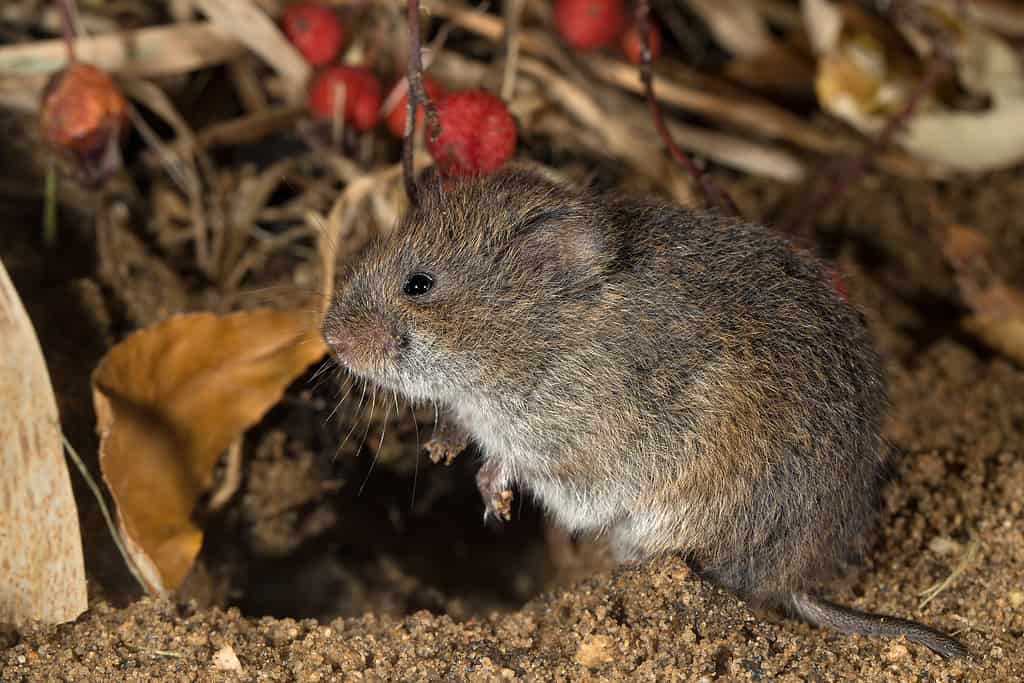
Many confuse the eastern meadow vole with hamsters, but it is very much a rodent that will invade your home, given the opportunity.
©Agnieszka Bacal/Shutterstock.com
You’re probably familiar with the little mouse many confuse with a hamster. Perhaps you know it better as a field or meadow mouse, but it’s also known as vole and scientifically as Microtus pennsylvanicus.
Voles are distant cousins of hamsters who live primarily in woven grass nests inside burrows and under logs. Their preferred habitats are grasslands and open forests. Voles’ diet is the same as all other rodents in Indiana — they eat different types of food, including grass, crops, garden plants, and flowers.
Voles are also an essential food source for predators like domesticated cats, snakes, and prey birds. Although voles don’t stay in homes, these rodents are likely to invade your farm or kitchen garden as they are generally plant eaters.
Rats
If you find mice repulsive, their cousins, rats, are far more revolting. Rats, especially the brown rat, are common domestic rodents. They adapt very well around human presence, and they’re notorious for their destructive behavior as home invaders. Despite that, several other native Indiana rat species tend to live in secluded forests or deserts away from humans.
Rats are opportunistic feeders that consume whatever is available, including human refuse (the brown rat is notorious for this). Most native species feed on plant leaves, roots, stems, seeds, and berries. Like most rats in Indiana, the native rodents have strong climbing abilities, and you’ll likely spot them on trees, walls, and fences as they look for food. Here are some well-known native rats in Indiana.
Brown Rat, Norway Rat (Rattus norvegicus)
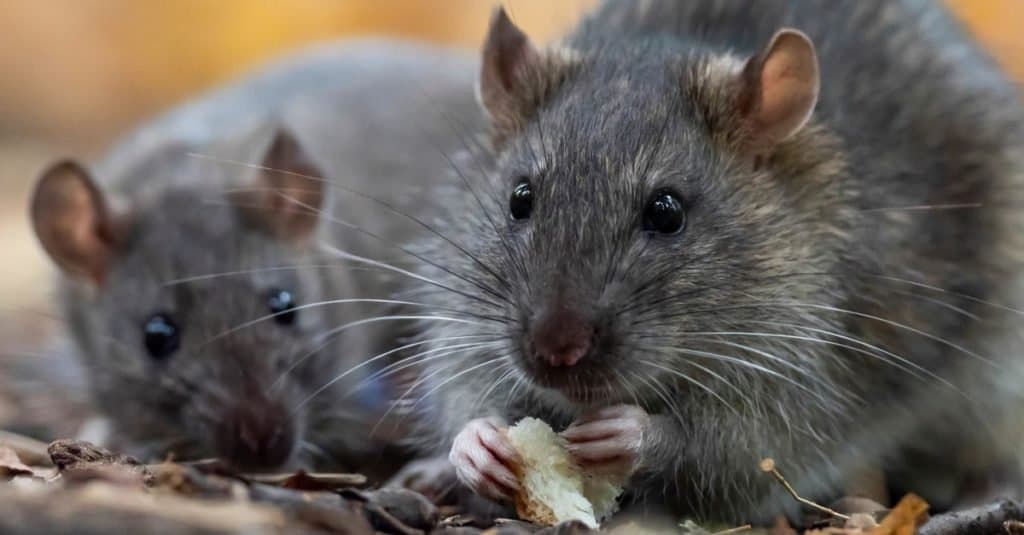
While brown rats inhabit Indiana, they’re not native to the U.S. Despite being called Norway rats, they’re from China.
©Ihor Hvozdetskyi/Shutterstock.com
The brown rat, otherwise known as the Norway rat, isn’t a native of Indiana or North America. This species traces its origin to China and Mongolia. It’s a well-known street rat that thrives in households and dirty places like sewers, especially in urban settings. Its natural habitat is the sewer tunnels and subway systems, where it lives by scavenging food from sewer waste and trash.
The Norway rat isn’t a small rodent. It can measure up to 16 inches in length, with males weighing up to 340 grams and females up to 255 grams. A female brown rat can give birth to as many as 20 pups in their lifetime, usually 5-13 months.
Rats are found in every part of the world except Antarctica. They are more prevalent in North America and Europe, though. These rats also carry numerous diseases, such as:
- Q fever
- Weil’s disease
- Rat bite fever
- Cryptosporidiosis
- Viral hemorrhagic fever
- Hantavirus pulmonary syndrome
Roof Rat, Black Rat (Rattus rattus)
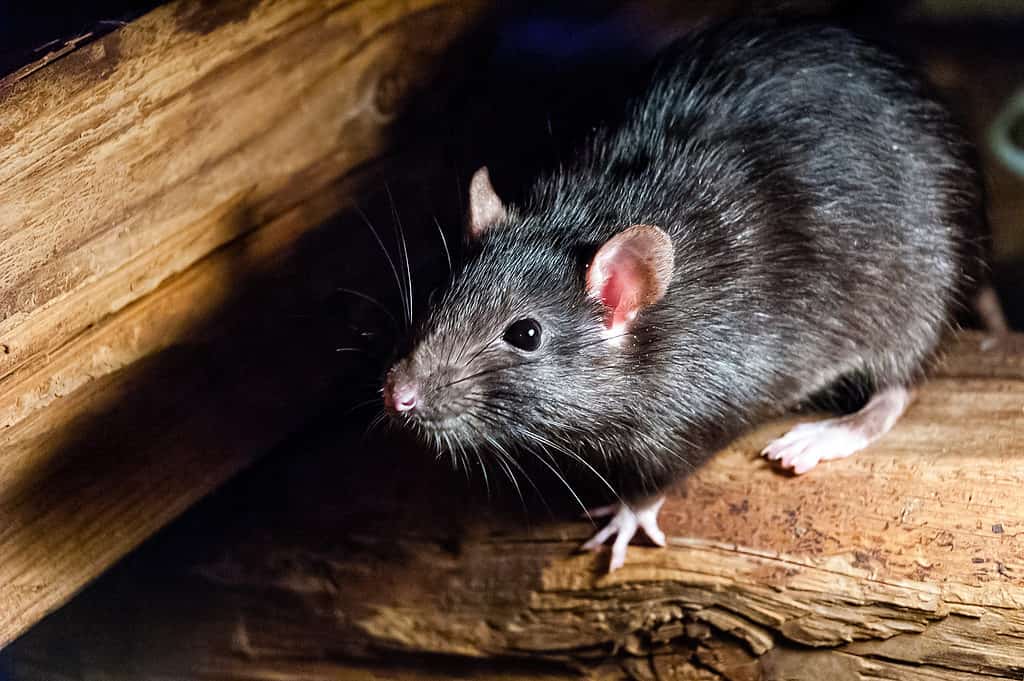
Like brown rats, black rats aren’t native to the U.S. They came from
India
.
©Carlos Aranguiz/Shutterstock.com
The roof rat, known scientifically as Rattus rattus, has other names like black rat and ship rat. They are not native to Indiana, but they came to North America in cargo ships from India. Since then, they’ve become so widespread that they are now considered a naturalized species. This rat is a destructive pest that feeds on various crops and can cause massive agricultural losses.
Roof rats are much smaller than Norway rats, but they have similar repulsive characteristics. They are black with shades of gray and brown. Like other rodents, they carry deadly pathogens in their bodies. Indeed, while they may look healthy and active, they can spread potentially fatal infections like the bubonic plague, toxoplasmosis, and typhus.
They live close to humans building their nests in attics, ceilings, and walls. They prefer to live in the upper parts of structures, especially roofs, where they can chew away on wires, hence the name. If your home is infested with roof rats, you may experience power outages, and they can even cause a fire hazard.
All that said, the Norway rat has since taken over places once dominated by the black rat. Black rats don’t breed as often as other species, but they’re still prevalent in North America, especially Indiana.
Others
Indiana is home to two other pests that are similar to rats and mice. Groundhogs, though, while rodents, are members of the squirrel family. Shrews, meanwhile, aren’t even technically rodents. If you live in the Hoosier State, be on the lookout for these pests.
Groundhog, Woodchuck (Marmota monax)
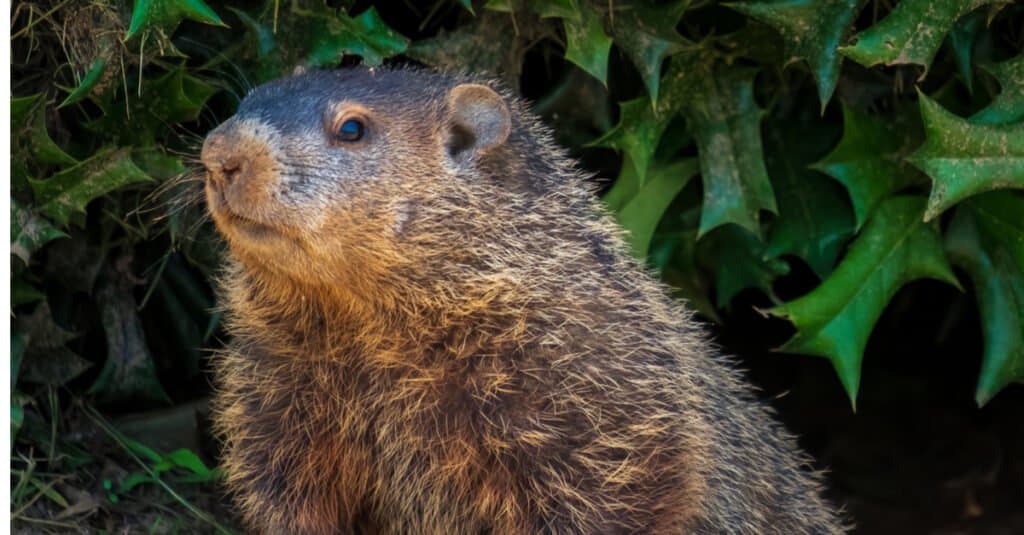
While they’re more likely to invade your property instead of your home, groundhogs are quite a nuisance in Indiana.
©samray/Shutterstock.com
The groundhog or woodchuck is not a rat, but it is a common pest in Indiana. They thrive where humans live, and their habitats include dens. They are hibernators known by other names, such as whistle pigs.
The groundhog can be gray, dark brown, or have the color of cinnamon. They have a stocky build and are slightly bigger than the brown rat. These rodents are avid tunnelers and can be a nuisance to homeowners, farmers, and gardeners.
Shrew (Soricidae)
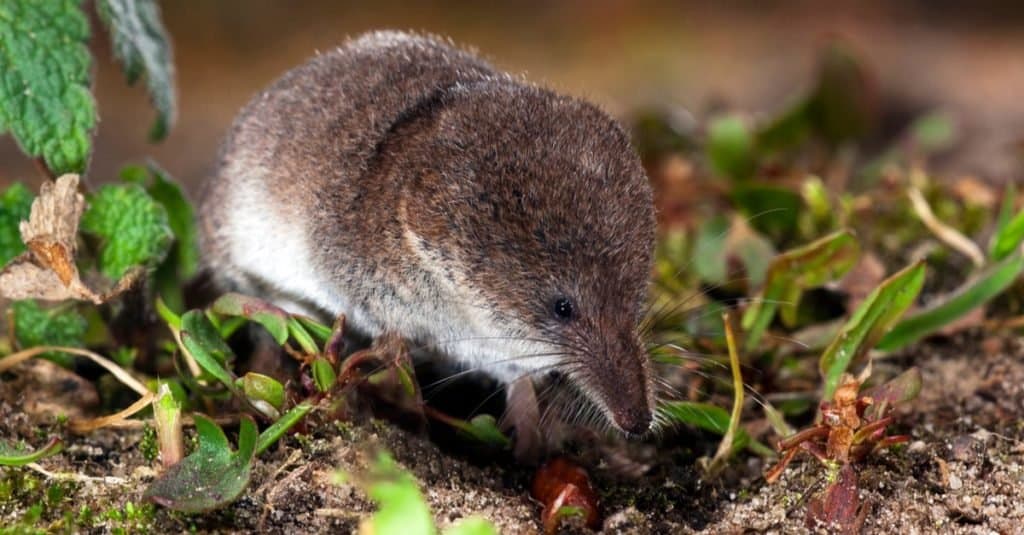
Several species of shrews live in Indiana, including the pygmy shrew (pictured).
©Agami Photo Agency/Shutterstock.com
The shrew, of the scientific family called Soricidae, is a small mammal the size of a mouse and a distant relative to the mole. Since it resembles a field mouse, a squirrel, and a mole, many people find it challenging to identify the shrew, but the shrew isn’t a rodent.
This small animal has very sharp, spike-like teeth, which it uses to tear and cut through plant matter and is therefore considered a pest in the agricultural market. The shrew will not necessarily invade your home, but if you are a farmer or own a small garden in your backyard, it could cause you a lot of trouble.
How To Know If Rodents Have Invaded Your Indiana Home
To know if rodents have invaded your house or compound in Indiana, you’ll need to look at possible signs of infestation. Rodents will likely announce their presence by their droppings. Mice tend to leave more droppings, usually in the shape and size of rice grains. On the other hand, rat droppings tend to be few but bigger. They’re also round and can be as big as an olive pit. Overall, the following factors can help ascertain if you have unwanted roommates in your home:
- A distinctive pungent odor
- Noticeable footprints and tail drags in dusty spots
- A trail of droppings and urine in house corners
- Dark smears and marks on baseboards
- Gnaw marks on door corners and other wooden surfaces
- Gnawing, digging, and running noises may agitate your house pets
What Diseases Are Associated With Rodents in Indiana?
Rats naturally suffer from flea infestation, which they, in turn, transmit to humans, causing a plethora of diseases. The same is also true of mice whose transmission can worsen asthma conditions. Below is a quick summary of diseases and infections associated with rodent infestation:
Asthma
Asthmatic people can experience a trigger after close contact with rodent urine and hair.
Hantavirus
Hantavirus can be transmitted through close contact with deer mouse saliva, urine, and droppings.
Human Lymphocytic Choriomeningitis
Human lymphocytic choriomeningitis is a common rodent-borne viral infectious disease caused by house mice and hamsters.
Leptospirosis
Also known as Weil’s disease, it is transmitted to humans through water or food contaminated with infected rats and ray urine.
Plague
This disease is caused by Yersinia pestis, a bacterium that is prevalent in Africa, the western United States, South America, and Southeast Asia. It gets transmitted to humans through the Oriental rat flea found on most rat species.
Rat-Bite Fever
Rat bite fever is primarily caused by the bite of an infected rat though it’s not a common occurrence in America.
Salmonellosis
Salmonellosis is a bacterial food-borne infection usually transmitted through food contaminated by rodents. You can also get infected by consuming food prepared on a contaminated surface.
Typhus
You could contract typhus from bites of infected rat fleas, such as Xenopsylla cheopis, the Oriental rat flea. When the flea bites you, it sucks your blood and defecates, contaminating the bite site.
Can Indiana Rodents Cause Harm to People?
Yes. Most rodent species in Indiana carry multiple disease-causing pathogens, though they don’t get sick themselves. Therefore, having them in your household can be a cause for alarm.
These pathogens can lead to several health complications in humans. House mice also transmit the bacteria that causes Lyme disease. If you notice rodents invading your home, the best thing to do is call a reliable pest control company to help you get rid of them to mitigate the impact of a severe infestation.
The photo featured at the top of this post is © iStock.com/Bruno_il_segretario
Thank you for reading! Have some feedback for us? Contact the AZ Animals editorial team.






